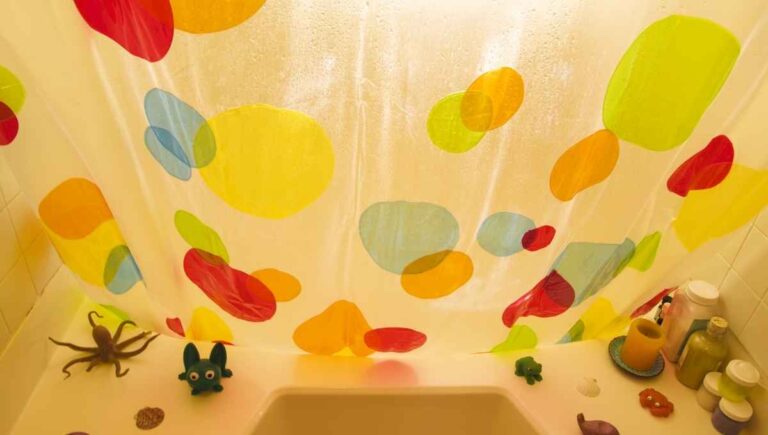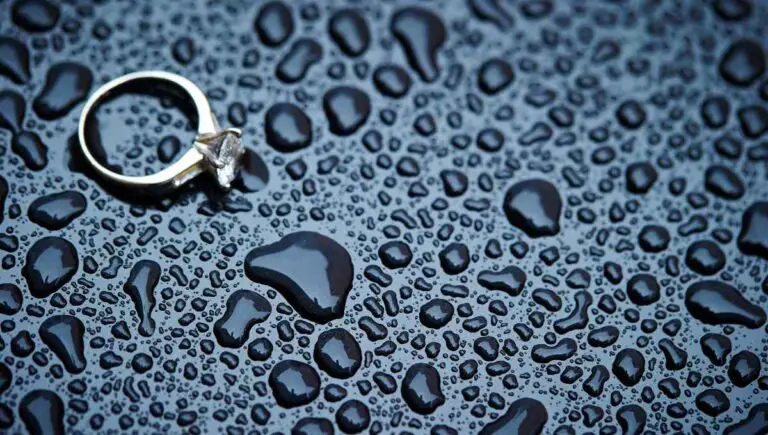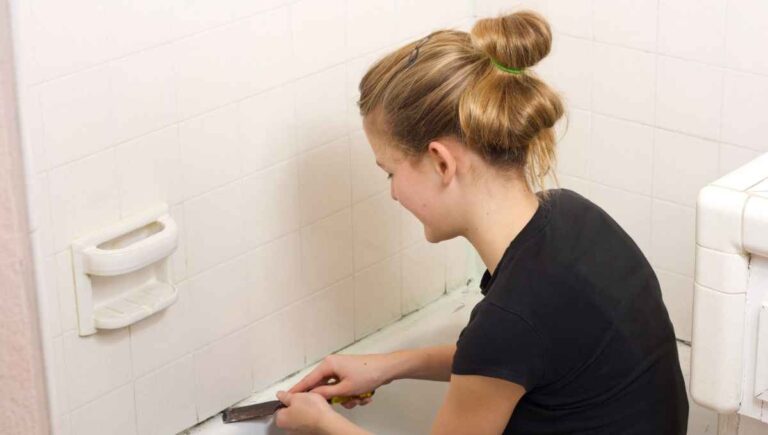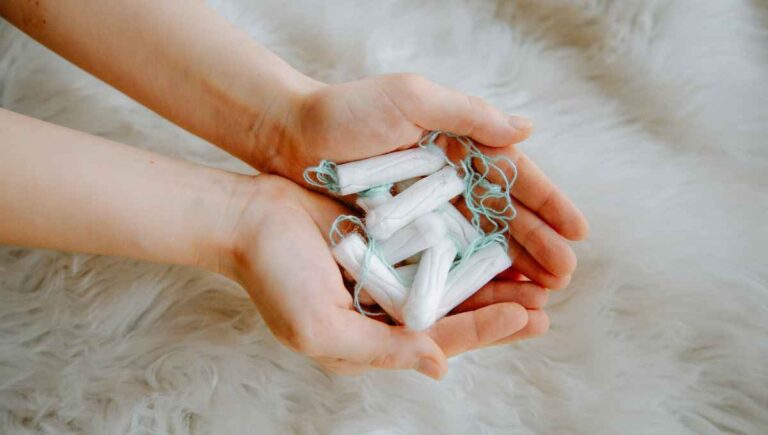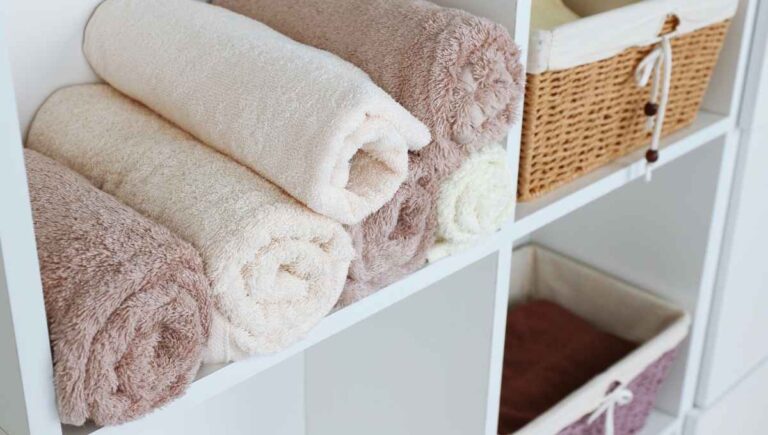How to Get Rid of Blue Toilet Water (Using This Trick Works)
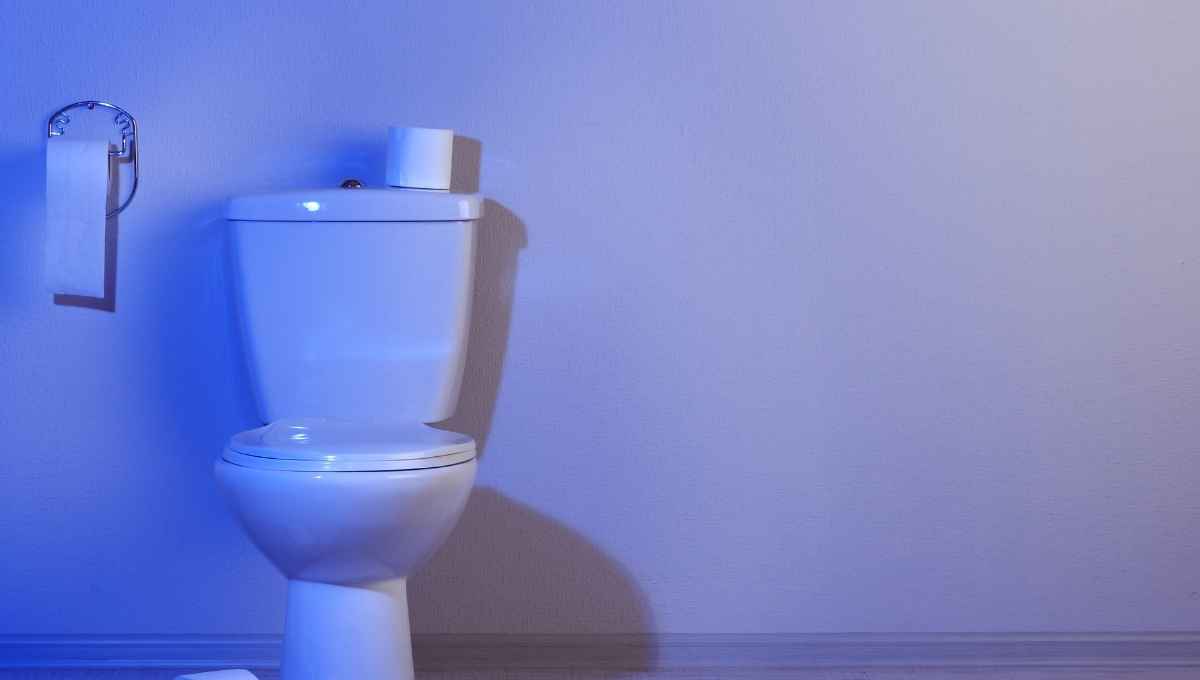
Is your toilet bowl turning a slight blue after you flush it? Don’t worry, you’re not alone. In fact, this is a common issue that many people face. However, before you panic, there are several things that you can do to get rid of the blue toilet water and restore your toilet to its former glory.
Getting rid of blue toilet water is achieved by thoroughly scrubbing the inside of your toilet bowl to remove any lingering cleaning products that may be stuck to the inside of the bowl. Flushing the toilet a few times afterwards should produce clear water in your toilet bowl.
In this blog post, we’ll explore the different causes of blue toilet water and how you can get rid of it quickly and easily. We’ll also provide some tips on how to prevent blue toilet water from happening in the first place.
This post contains affiliate links. This means Household Blogger may earn a commission should you make a purchase using any of our links. Please refer to our full affiliate disclosure policy for full details.
Here’s a Quick Pro Tip!
Blue toilet water is often caused by cleaning products, some of which are dispensed through a tablet with each flush.
There are great cleaning products both with and without bleach you should try!
Here are three of our favorite toilet-cleaning products from Amazon:
Clorox Ultra Clean Toilet Tablets: These tablets have the refreshing scent of rain and contain bleach to sanitize and blue dye. It prevents stains and removes mineral deposits and lime stains.
KIISIISO Toilet Bowl Cleaner Tablets: This toilet bowl cleaner is bleach-free and more environmentally friendly. It has a long-lasting fragrance and deodorizes the toilet with each flush.
New Resources Group Dye Tablets: These tablets are useful and used by plumbers to detect a leak and its location. One tablet can find a leak in a toilet easily.
How to Get Rid of Blue Water
The best way to get rid of blue water from a cleaning product is to remove the clean solution dispenser in the toilet.
However, there are other causes and ways to remove the blue in the toilet water. Let’s talk about it below!
What Causes Blue Toilet Water?
Blue toilet water is caused by a chemical reaction that occurs when certain cleaning products come into contact with the water in your toilet bowl. This usually happens when you use blue cleaning tabs or a toilet bowl cleaner that contains bleach or other harsh chemicals.
When these chemicals mix with the water in your toilet bowl, they can cause the water to turn blue. In some cases, the blue water may also have a green tinge to it.
This is due to the interaction between the chemicals in the cleaning product and the minerals in your water.
While blue toilet water is not harmful, it can be quite unappealing to look at.
How Do You Get Blue Water Out of a Toilet?
You can get rid of blue toilet water by removing the cleaning product, that’s causing the water to change, from within the toilet bowl. Most of the time people put a cleaning product inside the toilet bowl that dispenses with each flush.
If you cannot find anything in the toilet bowl, look in the toilet tank. If you see a cleaning solution dispenser (generally they are round), remove it and flush the toilet a few times.
These products should not be used in toilet tanks. They also have the potential to turn your toilet seat blue if the water splashes up too often.
Why Does My Toilet Have Blue Water?
Blue toilet water in a toilet tank can be caused by the cleaning solution that is used, or by copper pipes that begin to corrode. Your toilet can also have blue water if the copper pipes are less than one year old.
If you have old copper pipes, call a licensed plumber. If the water is blue because of a cleaning product, and it is seeping into other fixtures, run the water for several minutes.
If the color is still present, call an expert handyman.
Is Toilet Blue Toxic?
If the blue water is caused by a cleaning product that’s been installed in the toilet bowl or toilet tank, it remains harmless for a short time. But, with each use, the bleach in the product will begin to damage the most essential toilet parts.
If the blue water ever seeps into other water fixtures, remove the product immediately and run the water until the blue is gone. If it persists, call a plumber.
Another cause of blue water is new or corroded copper pipes which can lead to toxic levels of copper.
What Does Blue Toilet Water Do?
Blue toilet water indicates that your automatic cleaning device is still functioning. If there is not a cleaning device in your toilet bowl or toilet tank, then it is a sign caused by either new copper pipes, which are not harmful, or eroding harmful pipes.
Copper pipes can turn toilet water blue if the pipes are less than a year old. However, if the pipes are older, the blue color could be an indicator of corroding copper pipes.
If that’s the case, test the water for copper. If the water is high in copper, call a certified plumber.
You might also enjoy our post on Your Cloudy Toilet Water
Is Blue Toilet Water Safe?
As long as blue toilet water stays in the toilet, it’s safe for a while. If it’s blue because a cleaning dispenser is installed, the bleach in the product will eventually break down parts and surface materials over time. It can also erode the metal pipes and fixtures.
If you see blue seeping into other water fixtures like the sink or bathtub, take out the cleaning product and run the water for several minutes.
If you don’t have a product installed in your toilet bowl or toilet tank, the issue could be corroding copper pipes. If this is the case, call a certified plumber.
Is Blue Toilet Water Safe to Drink?
Drinking blue toilet water isn’t safe for humans, or pets. If a cleaning product turns the water blue, then the water has bleach and other toxic cleaners in it. If the cause is corroding copper pipes, drinking it can be poisonous.
Copper poisoning is a problem that comes from long-term exposure to copper and the most common way to get copper poisoning is through the water.
This poisoning can cause brain, liver, and kidney failure.
Is Blue Toilet Water Dangerous?
Blue toilet water can be dangerous or indicate potential danger, so neither you, your pet, nor your child should drink blue toilet water. If you have young children or pets, you should refrain from cleaning products that change the toilet’s water.
If the toilet is blue because of copper, you and your family could be exposed to too much copper in the water. If you believe this is possible, have your water tested for copper.
Copper poisoning can cause various organs to fail.
Is Blue Toilet Water Bad for the Environment?
Blue toilet water is bad for the environment when it is caused by a bleach cleaning product because the bleach kills bacteria, including the good bacteria that are needed to break down biodegradable material.
This is especially problematic when you have a septic tank. Also, bleach left in toilets will break down the items in the toilet tank, and it can corrode the porcelain.
If you are hooked up to the sewer system in a large county or city, the blue water is less of an issue, but still concerning.
You might also enjoy our post on Toilet Water Splashed on You
Can You Use the Toilet if the Water is Blue?
You can use the toilet water safely despite it being blue. The most usual reason behind it being blue is because of a cleaning product, and flushing the toilet helps it clean itself. If the water is blue because of new copper pipes, it is still fine to use the toilet.
If you believe it’s being caused by copper pipes, but your pipes are more than a year old, you should call a plumber.
Your copper pipes are eroding if the water is blue, especially if other water fixtures are pouring out blue water.
Rainbow Woes
Some common colors that toilet water can change into are: brown, orange, pink, or somewhere between.
Most causes of the change in color are rust in the pipes or bacteria build-up. Let’s discuss it in the section below!
Why is My Toilet Water a Different Color?
Your toilet water is a different color because it maybe has rust, algae, or excessive amounts of copper. Also, if the color of your toilet water is pinkish-red, it could be due to harmless bacteria build-up. If your copper pipes are the culprit, contact a plumber.
If your toilet water is brown, orange, or brownish red, the cause is most likely rust in the pipes. If the color of the water is green, it could be from copper pipes or from harmless algae.
If the color is pink or pinkish-red then it’s probably bacteria build-up. The bacteria are mostly harmless, except with prolonged exposure.
What Does It Mean if My Toilet Water is Red?
If your toilet water is a brownish red, there may be rust if you have iron pipes. You can have your water tested to see what substance it is. But when water is pinkish-red, the cause is a harmless bacteria that builds up around moisture.
The same pinkish-red bacteria grows in or on anything that has moisture. A shower curtain is the most common place for pink bacteria to grow.
The official name of the bacteria is Serratia Marcescens. It’s harmless for a short time, but too much exposure can cause health issues.
Why is Blue Toilet Water Pink?
If your blue toilet water is turning pink, then you are having problems with rust in your pipes. Your toilet might also be collecting Serratia Marcescens, which is a harmless bacteria. The pink bacteria collects when moisture and dust particles mix.
Serratia Marcescens is a common bacteria that you probably have seen growing on your shower curtain.
It’s more likely to collect in bathrooms during renovations or building projects because of the saw dust and humidity.
It’s commonly harmless after some exposure but has been known to cause health issues in people that were exposed to it for too long.
You might also enjoy our post on How Much Water Does Your Toilet Hold?
Why is Blue Toilet Water Purple?
Your blue toilet water is purple because some installed cleaning products have purple dye instead of blue dye. It could also be that the pink bacteria called Serratia Marcescens is growing around the toilet bowl or inside the toilet tank.
Purple color in the toilet can also be from rust or corrosion in copper piping. If you’ve had your copper pipes for more than a year, call a certified plumber to fix it.
You can also try flushing three or four times and see if that gets rid of any of it.
Why is My Toilet Water Green?
Green toilet water can be caused by either copper pipes or algae. The algae is the least harmful issue in a toilet. It simply means there’s a backup somewhere in the plumbing. And, when it gets flushed out, the problem will go too.
It could also be copper pipes, but the color is typically blue.
If it is the pipes though and they’re over a year old, you should call a plumber because the copper in your pipes may be disintegrating or rusting.
How Do You Change the Color of Your Toilet Water?
You can change the color from clear to anything you want by installing a product with a dye in it. If the water is not a different color and you want the water to only be clear, then you should remove the product from the toilet.
If the color is caused by something other than a fun dye or cleaning product, then there’s some residue coming out of the pipes.
The color could be from a new pipe or a corroding pipe. Call a plumber if you think the pipe is corroding.
How Long Does Blue Toilet Water Last?
Blue toilet water will last the same amount of time the cleaning or dye product will last. Most dye products last four weeks before needing to be replaced. You can also tell when it needs to be replaced when the color starts to fade.
The reason for most dye products is to show when the product needs to be changed.
However, if the cause of blue water is not the dye and rather it’s from copper pipe eroding, a plumber should be called.
You might also enjoy our post on Can You Put Soap in the Toilet?
Cleaning a Toilet Tank with Blue Water
The most dangerous part of cleaning a toilet or the toilet tank is when the cleaning product contains bleach. Use with caution!
In this section, we will go over how bleach products can be harmful when used too often and with certain other cleaning solutions. Let’s begin!
Is it Safe to Put Cleaner in a Toilet Tank?
If the cleaner does not contain bleach it may be safe to use, but ensure to look at the ingredients first. The issue with cleaning products in the toilet tank is that bleach will erode the rubber and plastic parts of the toilet tank.
Using a continual cleaner in the tank that contains bleach can also disrupt the water supply and kill good bacteria that water needs. This is especially true in toilets connected to a septic tank.
Septic tanks need to be drained every so often, but if too much bleach is added to the water, toilet paper can not break down as easily and will clog up the system.
How Do I Get Blue Water Out of My Toilet?
First, you need to remove any cleaning product dispensers that have blue dye in them. They are installed on the rim of the toilet bowl and in the toilet tank. These products are harmful to your toilet and water system over time.
If you use a product dispenser in the toilet, don’t let this take the place of scrubbing the toilet periodically. At least once a month, your toilet should be scrubbed.
If you clean the toilet with another product, be sure the ingredients are compatible. Don’t mix a bleach product with ammonium or vinegar! If you do, the chemical reaction will create a poisonous gas.
How Long Do Blue Toilet Tablets Last?
Most blue toilet tablets last 3 to 4 weeks. Oftentimes tablets will come in packages with a 6 month supply. The package will tell you how often a tablet will last, but the blue dye will remind you anyway when it starts to fade.
If your tablet is a cleaning product with bleach in it, leave the product out for a couple of days and flush multiple times, before scrubbing the toilet with a different cleaner.
Flush multiple times and wait another few days before installing the new tablet.
Does Bleach Damage Toilet Bowls?
Bleach will damage your toilet bowl over some time. It will break down the components in the enamel or porcelain. If a bleach tablet is left in the toilet tank, it will eventually corrode the rubber and plastic parts which will need to be replaced.
It’s also dangerous to mix any other cleaning product with a bleach product. Certain mixtures can create a poisonous gas.
To clean the toilet with a different cleaner, be sure to remove all of the bleach in the bleach cleaner first.
You might also enjoy our post on Can You Replace a Toilet Tank
Related Questions
Does Blue Toilet Water Work?
Blue toilet water is a general indicator that the water flushing a cleaning tab installed in the toilet tank or rim of the toilet bowl. If the cleaning tab contains bleach, the toilet will be sanitized more often.
Some toilet tabs with blue dye are only deodorizers and do not sanitize the toilet.
These are helpful when the smell is your main concern and you clean the toilet with other products incompatible with bleach.
How Long Do Blue Toilet Tablets Last?
Blue tablets are often meant to last four weeks. You will know when they need to be replaced because the blue dye will fade. Typically tablets come in a pack of 6 and the full supply lasts for 6 months.
These products are helpful if the water in your toilet tank is dirty from rust or old toilet parts. Some products come with bleach.
If you buy a bleach product, do not mix it with a different cleaning product!
How to Get Blue Toilet Water?
You can purchase a blue cleaning tablet with bleach, and it will sanitize and deodorize your toilet. You can buy a bleach-free tablet that mostly deodorizes the toilet. Both last about four weeks before needing to be replaced.
You can also buy a tablet that is only used to turn the tank blue. Plumbers use this to find leaks in toilets, drains, and pipes.
If you install a cleaning product with blue dye and other drains and water fixtures become blue, stop using the product and call a plumber.
Final Thoughts
Dreaming of blue water yet? Some people love using blue cleaning tabs that keep their toilet sparkling clean in between scrubbing.
Other people don’t want to deal with the concerns that come with bleach products like:
- Being harmful to pets
- Harmful effects on your septic system
- If mixed with the wrong solution, it could create a poisonous gas.
Wherever side of the toilet water debate you’re on, we hope our article has helped!






